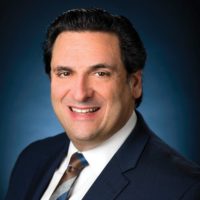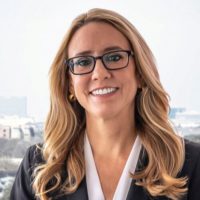
Partner
Jenner & Block
Turnaround management is an industry built on trust and relationships. On the surface, that sounds like a positive building block, but in some ways, the very basic tenets of the industry are holding it back, particularly when it comes to creating a more diverse, inclusive and equitable landscape.
“There’s a trust factor to [this] business,” Shanté George, principal of bankruptcy and restructuring and global forensics and litigation services at Baker Tilly, says. “You trust who you know, who you’ve worked with, but if you consistently only work with the same people and you never expand your network, how are you ever going to trust other people with a differing perspective?”
This double-edged sword is at the heart of some of the industry’s failures when it comes to creating a more diverse and inclusive environment. But, for an industry that has been historically dominated by white men, there has been some progress made, especially recently. For example, according to Angela Allen, a partner at Jenner & Block, when she took over as president of the Chicago Midwest chapter of the Turnaround Management Association, she became only the fourth woman to become president for the chapter in nearly three decades. However, she notes that the number of women in the chapter has risen by 5% over the last decade. This incremental improvement is indicative of the slow pace at which change is occurring.

Managing Director
SC Ventures
The chapter level of the TMA is where much of the work around diversity, equity and inclusion (DE&I) in the industry is taking place, and just getting to the point where these discussions are more common is a necessary step, albeit a small one, according to George, who says she has started to see more people of color and more gender diversity now than when she started in the industry 15 years ago.
Unique Vantage Point
In some ways, turnaround management is an industry tailormade to accelerate efforts related to DE&I.
“There are a number of different ways in which a company might find itself on the doorstep of the turnaround industry,” Pankaj Amin, managing director of SC Ventures, says. “And one of the first questions that a really seasoned, reflective turnaround professional is going to ask is: How did we get here? And that reflective nature, I think, is important from a DE&I perspective because when we look at where we’re falling short, that’s a question that we’re not afraid to ask as turnaround managers.”

Principal
Bankruptcy & Restructuring, Global Forensics & Litigation Services
Baker Tilly
In addition to being in a business that focuses on solving problems and helping companies fix their weaknesses, turnaround management professionals increasingly see a demand for more diverse teams from their clients.
“I think there’s an optics messaging aspect to it, but then, quite frankly, it also works. That’s why clients demand it. That’s why they want to hire diverse teams. That’s why it’s in your interest as a professional to be able to pitch a diverse team,” Rachael Smiley, an attorney and shareholder at Ferguson Braswell Fraser Kubasta, says. “That’s what they’re going to ask for, it’s what they’re going to expect, and it’s what we need to be able to provide to them.”
Working as part of a more diverse and inclusive team is about more than making clients happy, however, as it also can create more success for the turnaround team itself.
“I do want those differing perspectives and those diverse backgrounds, but people also handle stress differently. People come at solutions differently,” George says. “So, I’ve experienced that from the client side, but also from my own team, is the more diverse your group of people is, the differing perspectives you have, the differing approaches you might have to getting something done.”

Partner
Archer & Greiner
Turnaround managers also have the ability to be a positive influence outside of their own industry, as they can encourage clients to incorporate more DE&I into their own internal processes.
“We have a unique vantage point in order to help pivot that company towards a better positioning in the marketplace,” Amin says. “And diversity is … one of those tools in the tool box that you can take out and make sure that you are addressing.”
This is a particularly salient subject in the current environment, as an economic downturn fueled by the COVID-19 pandemic will continue to cause companies to consider restructuring.
“In the 2008 recession, a lot of the gains that a lot of companies had made in terms of women and diversity were wiped out,” Allen says. “I’m concerned that that’s going to happen again now.”
TMA Takes Charge

Attorney/Shareholder
Ferguson Braswell Fraser Kubasta
To make sure it doesn’t, at least within the turnaround industry, the Turnaround Management Association is taking more intentional steps to improve DE&I throughout its membership.
“Corporate clients want to see more diverse teams, not just on the pitch but on the job,” Allen Kadish, a partner at Archer & Greiner, says. “TMA is trying to address those issues and be a leader.”
This heightened focus is being spearheaded by Matthew English, the 2021 president of the TMA, but he’s not doing it alone. English put together a presidential working group focused on DE&I and recruited Allen, Amin, George, Kadish and Smiley to participate. The working group is taking a lot of inspiration from what has been done at the chapter level, including what Amin, George and Kadish have done for the New York chapter, which for several years has focused on diversity efforts. In 2015, as TMA-New York City chapter president, Kadish became the first member of the LGBTQ2+ community to serve as chapter president system-wide, and in 2016, as chapter chair, led the first TMA chapter diversity event.
The working group, along with TMA leadership, have already begun their work, including a training course with Dr. James Pogue, a public speaker and expert on diversity and inclusion. These training sessions forced the members of the working group and TMA leadership to really examine their own perspectives on the demographic disparities within the association, the industry and society at large.
Training is just the first of many steps, with the working group members very recently holding their first meeting to begin discussing the areas they would like to address and their initial goals, particularly those they hope to act on in the first half of 2021. Members of the group emphasize that gathering data on the demographics of the TMA membership will be a key initiative.
“I think the data will allow us to ultimately measure the level of successful engagement we were able to have,” Smiley says, noting that this also will help the organization better understand how it can address a long-standing weakness: retention. “We want to retain people in our organization, we want to retain them in the restructuring industry, so data will give us some information on whether or not we’re being successful in our retention efforts.”
Data alone can’t make change, so the working group also is discussing additional ways it can immediately begin moving the needle, including highlighting what’s being done at the chapter level, examining work done by sponsors and partners, and, ultimately, bringing in more people and forming an official committee within TMA dedicated to DE&I. The association also wants to focus more on networking, fellowship and mentoring so it can help industry participants from marginalized groups form the types of relationships that are so vital to succeeding and getting work in the industry.
A Launching Point
Although none of these initial plans create concrete solutions by themselves, they serve as a “launching point” for the future, especially since, according to the members of the working group, the TMA is really investing in this endeavor.
“I know that TMA is taking this initiative seriously,” Amin says. “We’re putting resources behind this, not just from a financial perspective but from a training and education and a best practices perspective.”
“They are reaching out to people, they are asking for help. They are not just saying, ‘You do it and then we’ll stamp the TMA brand on it.’ They are saying, ‘I am in it,’” George says.
George admits that quantifying the impacts of the TMA’s initiatives will be difficult, but she says that it will be important to keep canvassing membership about this topic so that it not only remains at the top of mind but so there is data reflecting progress made. One way the TMA can measure its progress is by looking at engagement, including participation in association events and committees, while ensuring that change is happening both externally and internally.
“When people perceive value, they will give back to the organization with their time and with their investment and their energy and their money,” Smiley says. “That’s how you know they’re engaged. So, I think that’s really the metric we want to measure.”
Ultimately, the work the TMA is undergoing is meant to create a better industry that provides opportunities to a wider base of people.
“I think we’ve all matured into a space where we understand that no one should have to fight from a diversity perspective to succeed, that the profession ought to be broad enough where we can all succeed,” Kadish says.
It will take hard work and a dedication to providing results rather than promises to create that type of environment. According to the members of the working group, that’s how the TMA is approaching this endeavor.
“It’s a big mountain to climb. It’s not something that you’re going to fix tomorrow. It’s not something that you can just rubber stamp,” George says. “You don’t need to shout from the mountain tops to be doing good work. In my opinion, sometimes it’s more about showing what you’re doing rather than telling people about it.”
Phil Neuffer is managing editor of ABF Journal.
